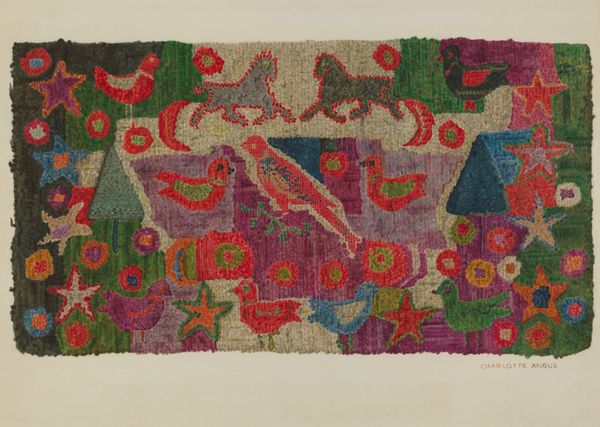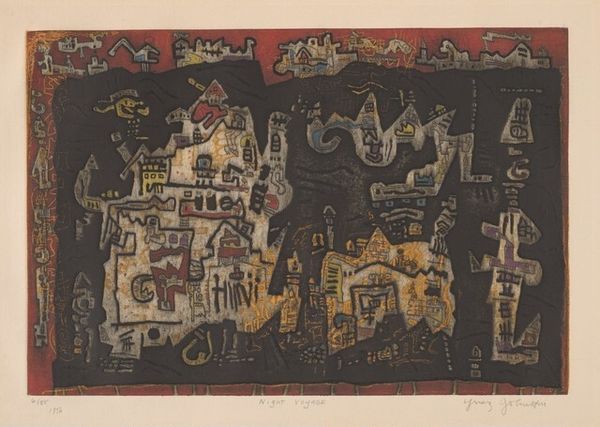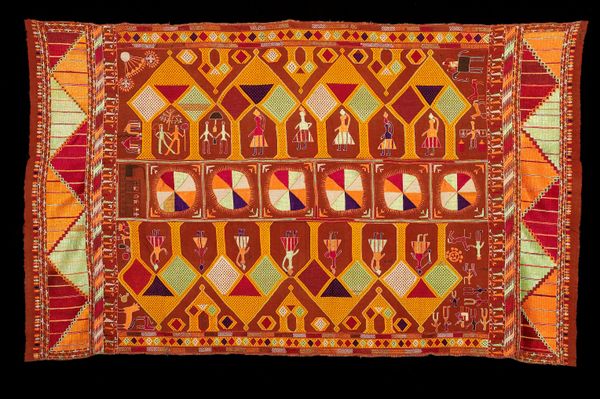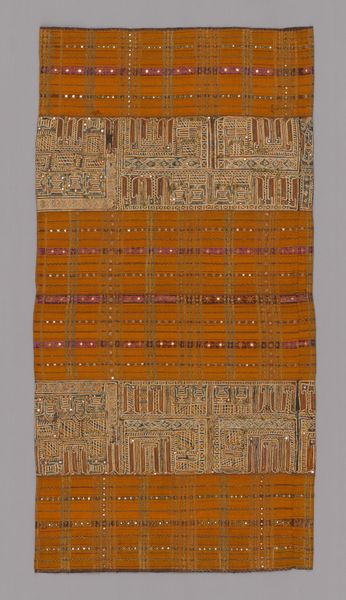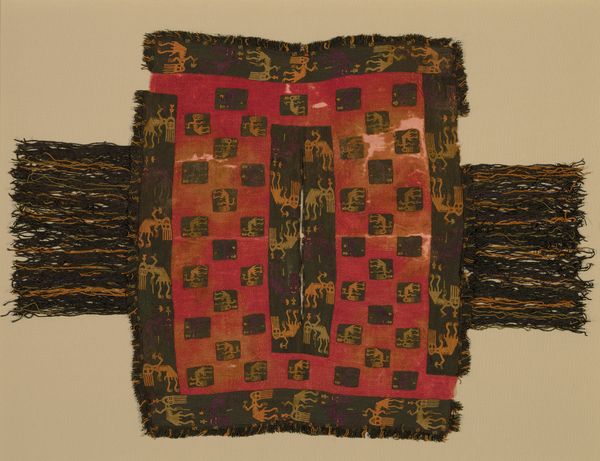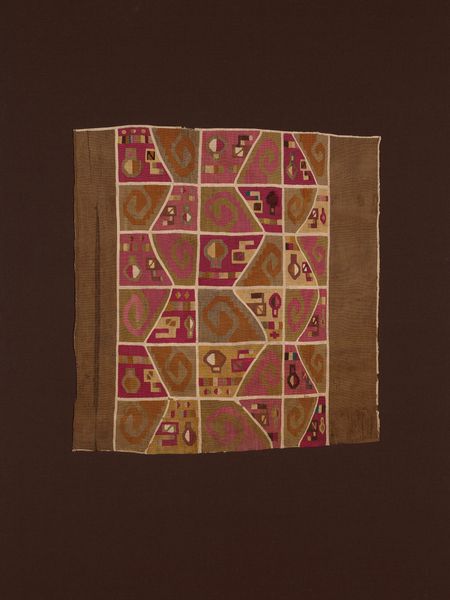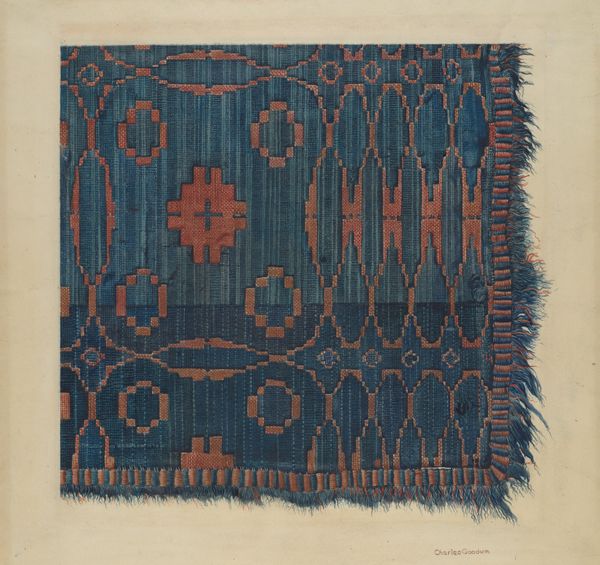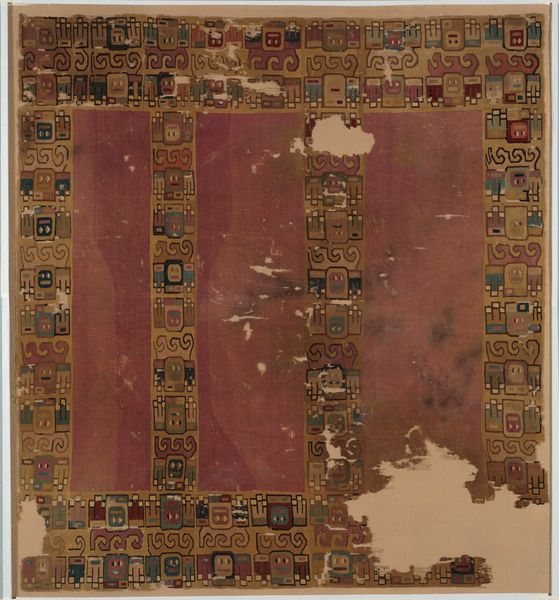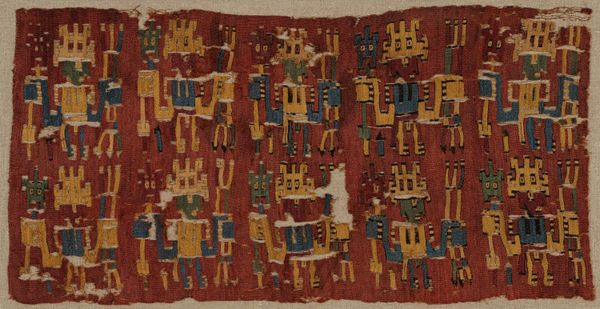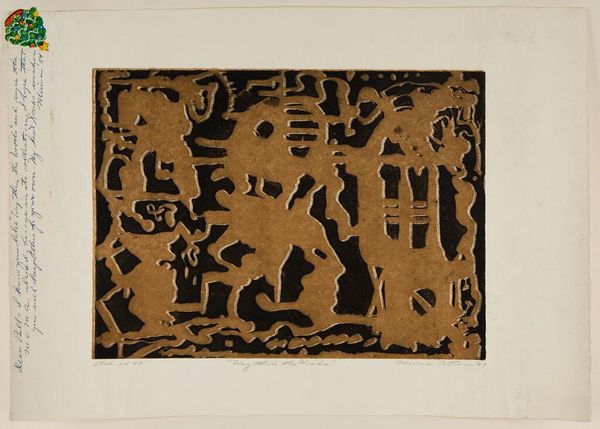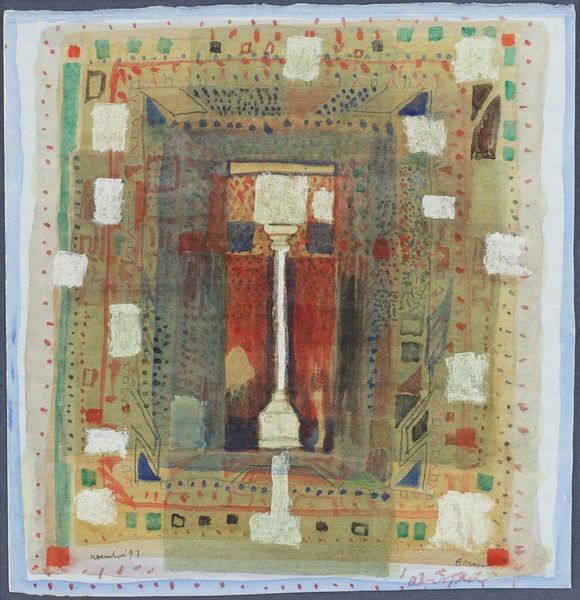
weaving, textile
#
pattern
#
weaving
#
textile
#
geometric
#
indigenous-americas
Dimensions: 67 × 45.1 cm (26 3/8 × 17 3/4 in.)
Copyright: Public Domain
Editor: Here we have an ancient textile panel, created by the Nazca people around 500 to 600 AD, made from weaving. It's a detailed miniature, and from a distance, it gives the impression of some kind of circuit board design. What do you see when you examine the visual construction of this work? Curator: Formally, the piece commands attention through its intricate deployment of geometric and figurative elements. Consider the weaving’s structure: notice the rigid grid system overlaid with stylized anthropomorphic or zoomorphic representations. It's a complex interplay between abstraction and representation, wouldn't you agree? Editor: Absolutely. It almost feels like a deliberate puzzle in how it interweaves these two forms. What can we discern from this structure? Curator: Let us regard the color palette. The restricted range enhances the underlying geometric structure and accentuates select motifs, achieving rhythm through the sequential arrangement of pattern. Now, what theoretical framework might help us interpret these visual dynamics, separate from cultural context? Editor: Perhaps exploring semiotics? Could these repeated patterns function as signifiers within a broader system of meaning? Curator: Precisely! Or even a structuralist reading, deciphering the relationships between constituent parts. It's a compelling invitation to decode the textile's inherent formal language. Editor: It’s incredible how much analysis we can perform by simply focusing on the piece's structural makeup. Curator: Indeed, by engaging directly with the artwork’s visual elements, we open up interpretive avenues often overlooked when solely emphasizing historical context. Editor: It provides a more complete experience and enriched appreciation for art!
Comments
No comments
Be the first to comment and join the conversation on the ultimate creative platform.


